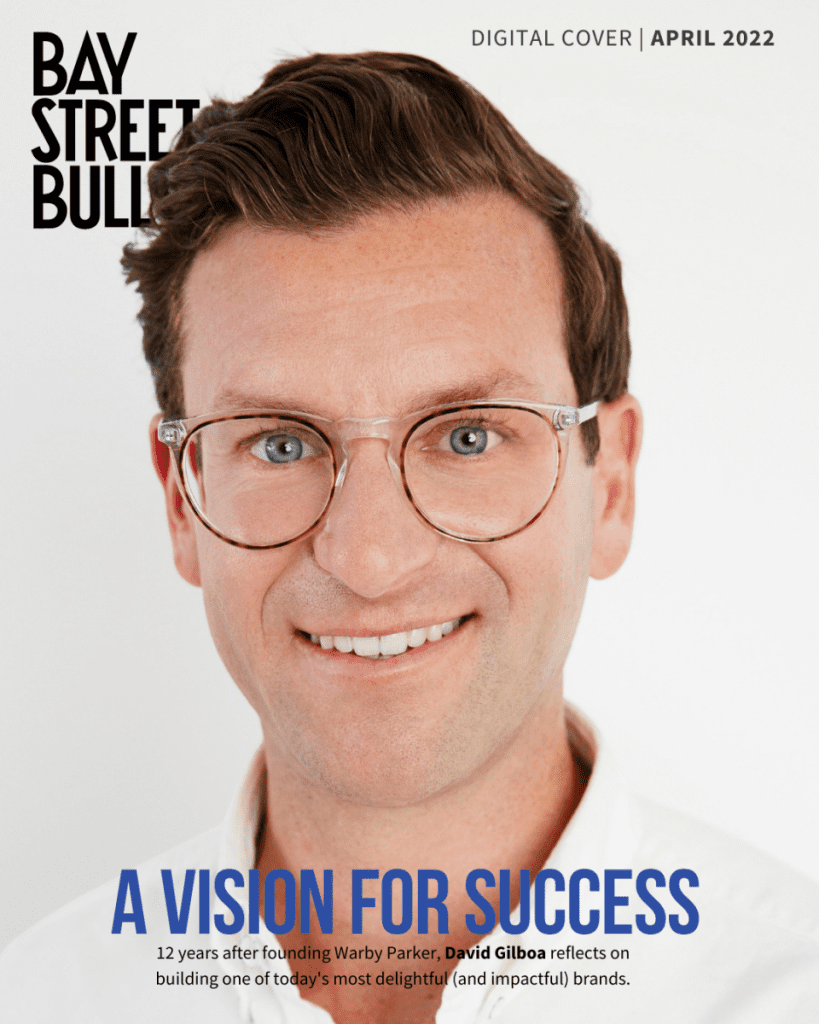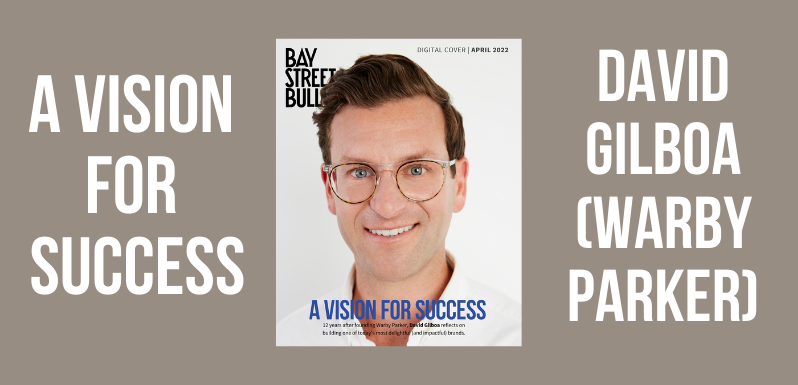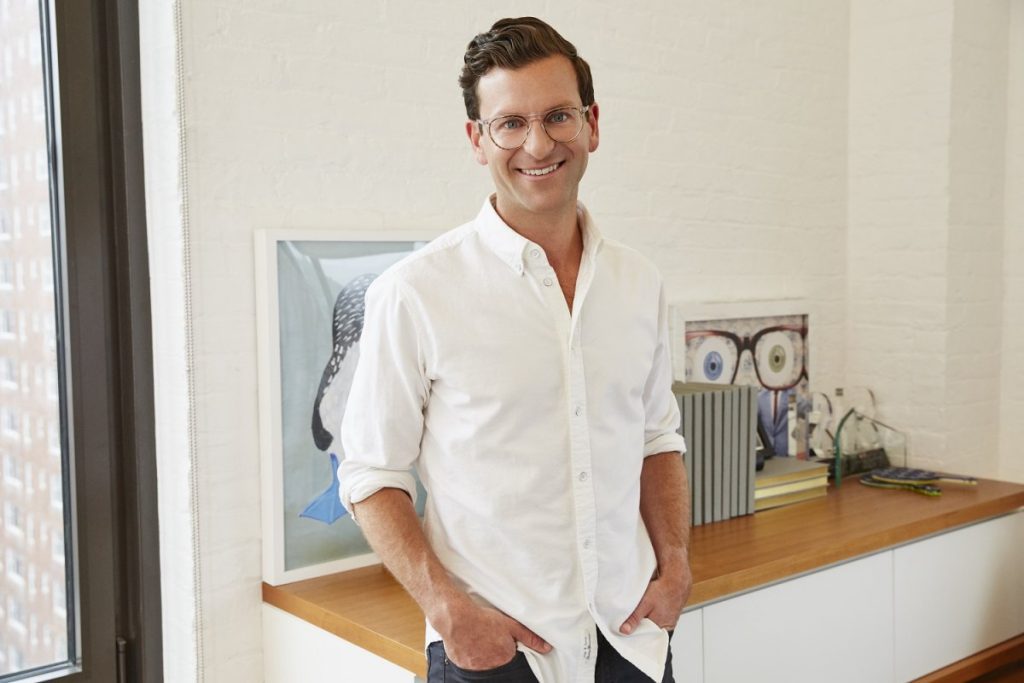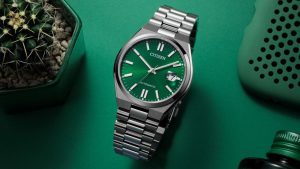[vc_row][vc_column][vc_column_text]In generations past, glasses had become something of a black sheep in the world of fashion. They were little more than a sign of deficiency, an uninspired necessity, an expensive wire-framed burden resting across the bridge of the nose. But then, a select few companies dreamt up a radical idea: what if they were to stop producing the same dull, cookie-cutter frames and crafted designs anchored in timeless, affordable style? Slowly, the notion of what eyewear could be started to change as function and fashion melded into one. Then, in 2010, Warby Parker emerged to epitomize this evolution.
Founded in Philadelphia by Neil Blumenthal, Andrew Hunt, David Gilboa, and Jeffrey Raider out of a Venture Initiation Program of the Wharton School of the University of Pennsylvania – where the founders all studied – the company soon discovered that there was a community clamouring for elevated design in prescription glasses that wouldn’t cost hundreds of dollars. Within a year of launching, Warby Parker had earned the interest of Vogue, a feature that caught the attention of both customers and investors alike. In September 2011, the company raised a Series A round of $12.5 million. By fall 2012, it raised a $37 million Series B round. As of 2021, Warby Parker is valued at USD 6.8 billion and has distributed over 10 million pairs of glasses around the globe. But despite their commercial success, Warby Parker’s founders have set their sights on far more ambitious pursuits.
Since 2015, the company has been investing in its Pupils Project, a project designed to eliminate the barriers that prevent kids from getting proper vision care. Warby Parker’s partners administer vision screenings and eye exams in classrooms and the brand provides prescription glasses, which each student handpicks in a trunk show set up at school. To date, the Pupils Project has screened over 220,000 kids, administered over 64,000 eye exams, and provided more than 54,000 prescription glasses, all while producing the most eye-catching designs available on the market.
In a recent interview with Warby Parker co-founder, David Gilboa, we discovered the inspiration behind the Pupil Project, insights into building a billion-dollar company, Warby Parker’s mission to revolutionize the world of vision, and more.


If you could summarize Warby Parker’s work into one impact statement, what would it be?
David Gilboa: Our mission at Warby Parker is to inspire and impact the world with vision, purpose, and style without charging you a premium for it.
Since founding the brand in 2010, I think a lot of people are familiar with Warby Parker and its offerings. But, at the time, why was a brand such as yours necessary?
David Gilboa: We started Warby Parker to solve our own problems. I had lost a very expensive pair of glasses, my only pair of glasses that cost me $700. Right before I started grad school, I had quit my job in finance and handed in my company-issued Blackberry on my last day of work. Then, I travelled for six months […] and along the way, lost that pair of glasses. I came back to the US, started my MBA program, and I needed to buy two things: a new pair of glasses and a new phone. I went to the Apple Store and bought this magical device – the new iPhone – for $200 just to realize I was gonna have to pay several hundred dollars more for a pair of glasses. It just didn’t make sense to me that this technology that has been around for hundreds of years was gonna cost more than this magical computer I could keep in my pocket and quickly realized that there were lots of other frustrated consumers.
And why is Warby Parker necessary today? Are you trying to solve the same problems or have new issues arisen?
David Gilboa: What makes this so exciting is that it’s such a massive industry and that so many people need some form of vision correction. As a result, the industry is massive – $44 billion in the US and $160 billion globally – and has been controlled by a very small number of companies that have artificially kept prices high, offer poor customer service, low customer satisfaction, and very little innovation.
In 2010, we came in with a very different model and it’s allowed us to keep growing and offering options like our home try-on programs and $95 lenses instead of several hundred per pair. […] But we also understand that, even at $95, there are lots of people around the globe that can’t afford glasses, so we’ve sought to solve that through our non-profit partnerships and [initiatives such as] our buy-a-pair, give-a-pair program. […] We understand the world’s problems are getting more complex over time but we fundamentally believe that you can use business to do good and hopefully we’re on the path to prove that.
RELATED: 10 Innovators on What the Future Has in Store for Canadian Tech
The company has hit so many milestones since launching but what is the process of establishing new goals? How do you balance growth with not over-building?
David Gilboa: When we launched, a few of us on the founding team had worked in consulting and finance and we were pretty good at building financial models. And so we put together this really detailed five-year forecast and kind of thought we had all our assumptions fully thought-out. And then the day we launched, we had these great features in GQ and Vogue and all of a sudden, it became this internet phenomenon. We hit our first-year sales targets in three weeks. We sold out of all our inventory. We had a waitlist of 20,000 customers and realized that the financial model was completely worthless. Ever since that, we continue to set ambitious targets for ourselves, but then as we move towards those targets, we recognize that there are new adjacent opportunities.
We continually raise the bar around the growth that we think is achievable and the impact that we think is achievable. Our north star is really putting the customer at the centre of everything we do. And as a direct-to-consumer brand, we’re fortunate that we get so much feedback and so much data from our customers who tell us when we’re doing things amazingly well and when we’re exceeding their expectations. And they tell us when they’re disappointed or when there’s friction in the process. […] It’s often our customers that help guide those future goals.
Warby Parker recently worked with Johns Hopkins University to put together a study that spoke to the broader impact that glasses can have on work and education. Can you speak to the key findings from that study?
David Gilboa: When we launched the company, we launched our buy-a-pair, give-a-pair program that same day and we have some great non-profit partners around the world. […] We saw how effective their work was all over the globe but we also realized that there’s a massive need for our resources in our own backyard, in places like New York City.
It’s one of the wealthiest places on the planet and yet we estimate that 200,000 students need glasses but don’t have access to them. These tend to be children in low-income parts of the city. When we discovered this, we tried to see how we could create as much impact as possible and we realized it was to address their needs directly. So, we set up the Pupils Program, where we bring eye doctors into schools to perform free vision tests and eye exams. For any student who needed glasses, Warby Parker provided them. We’ve now expanded it to cities across the country.
[…] We wanted to see if these programs were as effective as we suspected, so we work with Johns Hopkins, where they did a three-year study to track the test scores of students who received glasses through the program. We found that it was the equivalent of those students receiving an extra 2-6 months of schooling each year. […] So many of those students were misdiagnosed with ADHD or special needs when they were simply disengaged because they couldn’t see.
At the end of the day, what is the vision and bigger purpose for you and the company?
David Gilboa: Ultimately, we want to create a vision for all, figuratively and literally. In a literal sense, I want to make sure that every human who needs vision correction has access to the tools. And figuratively, I want to demonstrate that a business can be profitable and do good in the world. Hopefully, we can inspire other organizations to do the same.
This interview has been edited for length and clarity. Listen to the full Q&A on the Mission Critical podcast below.
[yikes-mailchimp form=”1″ title=”1″ submit=”SUBSCRIBE”][/vc_column_text][/vc_column][/vc_row]














